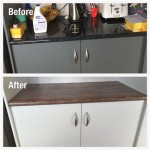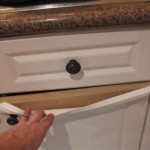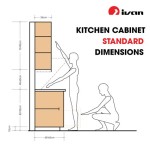Antique Kitchen Cupboard Doors: A Timeless Element of Design and Functionality
Antique kitchen cupboard doors represent more than just functional components within a culinary space; they embody a rich history, exquisite craftsmanship, and a unique aesthetic that transcends contemporary design trends. These doors, often salvaged from older homes, estates, or furniture restoration projects, serve as focal points, adding character and depth to both traditional and modern kitchens. The inherent value of antique cupboard doors lies in their ability to blend history with modern living, creating a space that is both visually appealing and functionally efficient.
Sourcing antique kitchen cupboard doors requires careful consideration and research. The process often involves visiting antique stores, architectural salvage yards, and online marketplaces specializing in vintage and reclaimed building materials. Evaluating the condition of the doors, the type of wood used, and the style of construction are essential steps in determining their suitability for a particular kitchen design. Furthermore, understanding the historical context of the doors can enhance their appeal and contribute to the overall narrative of the kitchen space.
The integration of antique cupboard doors into a modern kitchen design requires a delicate balance between preservation and adaptation. While maintaining the original charm and character of the doors is paramount, adjustments may be necessary to ensure they function seamlessly within a contemporary kitchen layout. This might involve refinishing the doors, replacing hardware, or modifying the size and shape to fit existing cabinetry frames. The goal is to seamlessly blend the antique elements with modern appliances and fixtures, creating a cohesive and visually harmonious space.
Key Considerations When Choosing Antique Cupboard Doors
Selecting the right antique cupboard doors requires a thorough assessment of several factors. This includes the style of the doors, the type of wood, the condition of the finish, and the overall dimensions. Each of these factors plays a critical role in determining whether the doors are suitable for a particular kitchen design and whether they can be effectively integrated into the existing cabinetry system.
Style and Design: Antique cupboard doors are available in a wide range of styles, reflecting different historical periods and design movements. From the simple, Shaker-style doors of the 18th and 19th centuries to the more ornate, Victorian-era doors with intricate carvings and raised panels, the options are diverse. The style of the doors should complement the overall aesthetic of the kitchen and reflect the homeowner's personal taste. Consider the existing architectural details of the kitchen and choose doors that harmonize with the overall design theme.
Wood Type and Grain: The type of wood used in antique cupboard doors significantly impacts their appearance, durability, and value. Common wood types include oak, pine, maple, cherry, and walnut. Each wood has its unique grain pattern, color, and texture. Oak, for example, is known for its durability and distinctive grain, while pine is valued for its affordability and rustic charm. The wood type should be selected based on its visual appeal, its suitability for the kitchen environment, and its compatibility with the existing cabinetry.
Condition and Restoration: The condition of antique cupboard doors is a crucial factor to consider. While some wear and tear is to be expected, it is essential to carefully inspect the doors for signs of significant damage, such as cracks, warping, or rot. Restoration may be necessary to repair any damage and ensure the doors are structurally sound. This may involve patching cracks, replacing damaged panels, or refinishing the doors to restore their original luster. The level of restoration required will depend on the condition of the doors and the desired aesthetic.
Preparing and Restoring Antique Cupboard Doors
Before installing antique cupboard doors, it is essential to prepare them properly. This typically involves cleaning, stripping, sanding, and refinishing the doors. The preparation process ensures that the doors are in optimal condition for installation and that the finish is durable and long-lasting. The restoration process may also involve addressing any structural issues, such as loose joints or damaged panels.
Cleaning and Stripping: The first step in preparing antique cupboard doors is to thoroughly clean them to remove any dirt, grime, or old finish. This can be done using a mild detergent and water or a commercial cleaner specifically designed for wood. After cleaning, the old finish should be stripped using a chemical stripper or a heat gun. It is important to follow the manufacturer's instructions carefully and to take appropriate safety precautions, such as wearing gloves and eye protection. Complete removal of the old finish ensures that the new finish will adhere properly and create a smooth, even surface.
Sanding and Repairing: Once the old finish has been removed, the doors should be sanded to smooth out any imperfections and prepare the surface for refinishing. Start with a coarse-grit sandpaper and gradually work your way to a finer grit. Pay particular attention to any areas that are damaged or uneven. Repair any cracks or holes with wood filler and sand the filler smooth when it is dry. This step ensures a uniform and even surface for the final finish.
Refinishing and Sealing: The final step in preparing antique cupboard doors is to refinish them with a new coat of paint, stain, or varnish. The choice of finish will depend on the desired aesthetic and the type of wood. Paint provides a solid color and can be used to create a modern or contemporary look. Stain enhances the natural grain of the wood and adds depth and richness. Varnish provides a clear, protective coating that allows the natural beauty of the wood to shine through. After applying the finish, the doors should be sealed with a clear coat to protect them from moisture and wear.
Integrating Antique Doors into Modern Kitchen Design
The successful integration of antique cupboard doors into a modern kitchen design requires careful planning and thoughtful execution. The goal is to create a space that is both visually appealing and functionally efficient, blending the charm of the antique doors with the convenience of modern appliances and fixtures.
Color Palette and Hardware: The color palette of the kitchen should complement the color and grain of the antique cupboard doors. Neutral colors, such as white, gray, and beige, are often used to create a clean and contemporary backdrop that allows the doors to stand out. Hardware, such as knobs, pulls, and hinges, should be carefully selected to match the style of the doors and the overall aesthetic of the kitchen. Consider using antique or reproduction hardware to enhance the vintage feel of the space. Alternatively, modern hardware can be used to create a more eclectic and contemporary look.
Cabinetry and Layout: The layout of the cabinetry should be carefully planned to accommodate the antique cupboard doors. The doors may need to be modified to fit existing cabinetry frames, or new cabinetry may need to be custom-built to accommodate the doors. Consider using a mix of open shelving and closed cabinetry to create visual interest and provide ample storage space. Integrate modern appliances seamlessly into the design, ensuring that they do not detract from the charm of the antique doors.
Lighting and Accents: Lighting plays a crucial role in highlighting the beauty of antique cupboard doors. Use a combination of ambient, task, and accent lighting to create a warm and inviting atmosphere. Under-cabinet lighting can be used to illuminate countertops and provide task lighting for food preparation. Accent lighting can be used to highlight the details of the doors, such as carvings or raised panels. Incorporate decorative accents, such as vintage dishes, antique utensils, and artwork, to enhance the vintage feel of the kitchen.
By considering these factors, homeowners can successfully integrate antique kitchen cupboard doors into their modern kitchens, creating spaces that are both beautiful and functional. The result is a kitchen that embodies both history and modernity, a testament to the enduring appeal of antique design.

Antique Oak Kitchen Cupboard In Original Finish Glass Top Doors Wood Bottoms

Antique Pantry Cupboard Pick Up Only

Antique Small Pair Wood Cupboard Doors 11x26 Cabinet Kitchen Vintage Old 529 24b

Antique Wood Cupboard Kitchen Cabinet Pie Safe 1800s Hutch American Primitive Storage Farmhouse Decor Cottage Country Style

Primitive Red Stepback Kitchen Cupboard One Piece 42w16d12d29 5h77h Is Not Free

Antique White Kitchen Cabinet 1920s

Antique Oak Kitchen Cupboard Cabinet With Drawers Top Glass Doors Long Valley Traders

Japanese Antique Kitchen Cabinet With Sliding Doors Rattan And Glass Panels For At 1stdibs Cabinets Vintage

White Kitchen Cabinet 1920s For At Pamono

Vintage Hawkeye Kitchen Cabinet China Hutch Display Case Pantry Dining Room Buffet Cupboard
Related Posts








